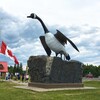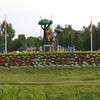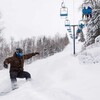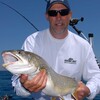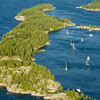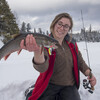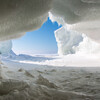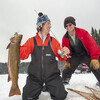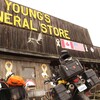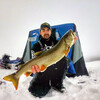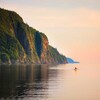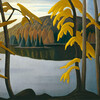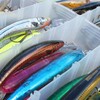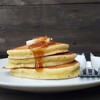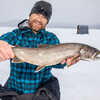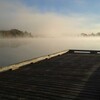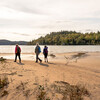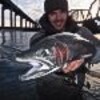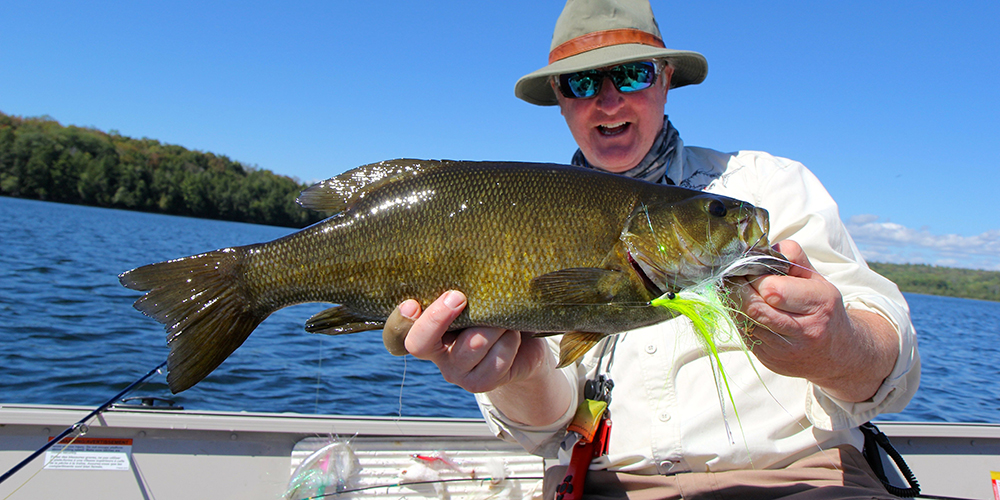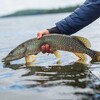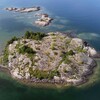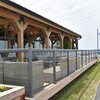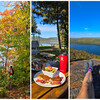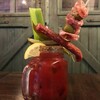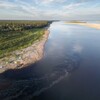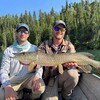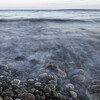
Paradise for the Adventurous Angler
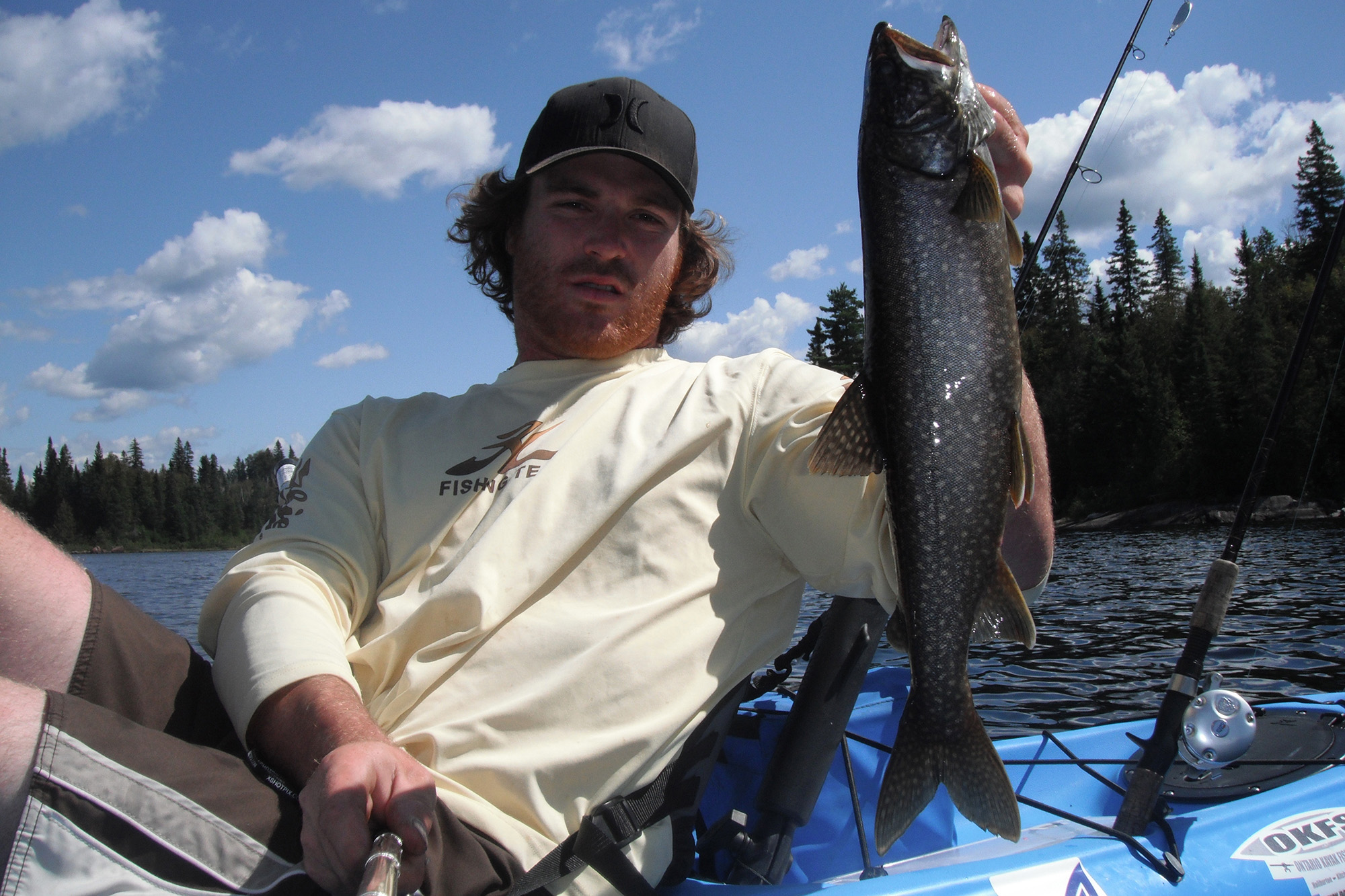
Have you ever thought about taking a fishing trip deep into Ontario's north? Maybe a place surrounded by pristine lakes, rivers and even a Great Lake? Are you looking for a place that boasts world-class trout fishing year-round? Do you want a sense of adventure? Well, Lake Superior Provincial Park is a destination for all of the above!
Fishing in the park is phenomenal for brook trout, lake trout and splake (lake trout/brook trout hybrid). The tributaries that run into Lake Superior from the park are teeming with migratory rainbow trout in the spring and are accompanied by pink, Coho and Chinook salmon during the fall run.
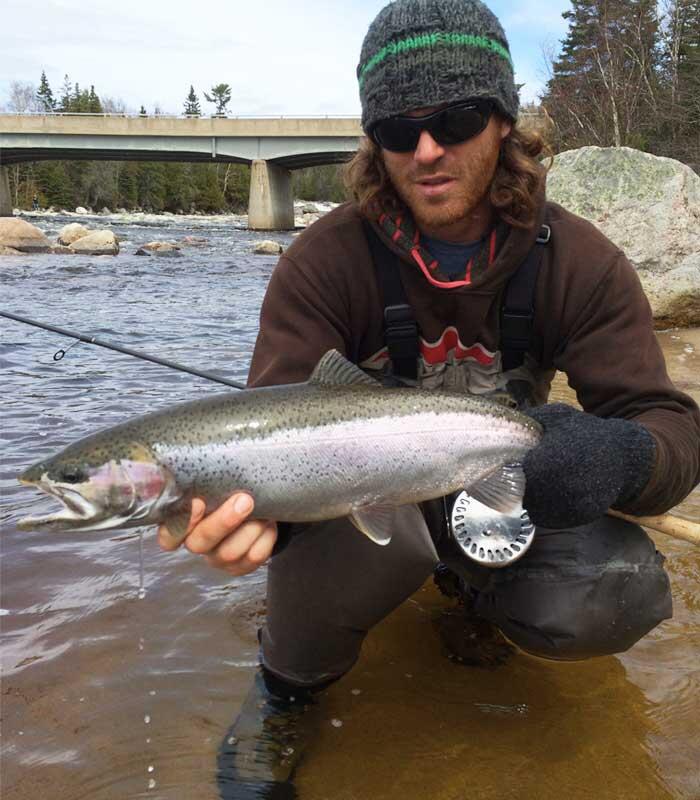
Brook Trout
The brook trout fishing stands out as the most desired for anglers visiting the park. The options are endless with lakes found right off Highway 17. Many lakes are just short portages, although most of the interior portages can be quite gruelling. Brookies in the park range from 12 - 18 inches on average, but anglers have a good shot at breaking the 20-inch mark on many of the lakes.
Open water tactics for brookies include both trolling and casting. Spring usually calls for casting shallow, pulling fish off rocky points, boulder-strewn shorelines, beaver dams and downed trees. Summer fishing is best done deeper, targeting fish in the 15- to 20-foot depths, especially on or near rocky shoals that have deep water access nearby.
Fall brook trout fishing can go either way. Depending on the water temperatures, these fish will either still be related to deep water or will begin to venture shallow, closer to the spawning grounds. One thing is for sure, they will be putting the fall feedbag on in preparation for the upcoming spawn. Cast spoons in various sizes from 1/4 to 3/4 ounces, such as Little Cleos or other similar spoons. A slow retrieve with the odd pause, flutter, and pop retrieve will put brookies into your canoe or kayak all year. Top-producing spoon colours have always been silver/blue and gold/orange, but don't be shy to experiment. Inline spinners in sizes #3 - #5 have their days, as do small bucktail jigs up to 3/8 of an ounce.
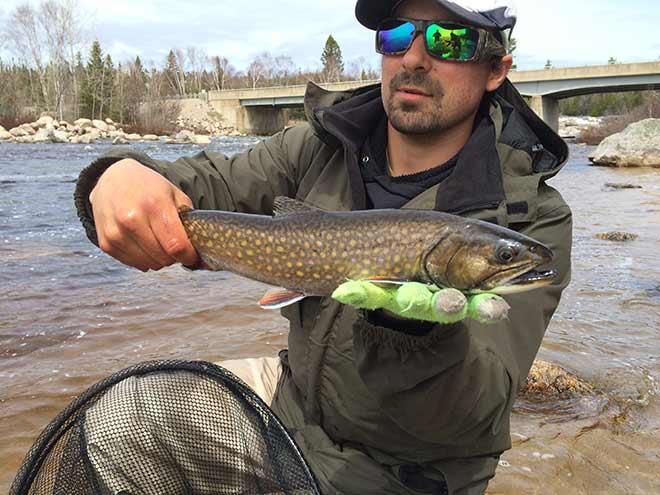
Remember, most fish in the spring are caught in 10 feet or less, so make long casts and try and stay as stealthy as possible. These lakes are extremely clear so spooking fish is always a possibility. Top producing flies for anglers to try are woolly buggers in black, orange, white and olive.
Leech patterns and small streamers in natural colours always seem to receive consistent takes, especially during low light conditions in the mornings and evenings when the trout are cruising shallow to feed. A slow retrieve is best with flies, too. I typically recommend a strip, strip, stop (count to 5), strip, strip, stop, retrieve. Caddis and hex hatches give fly anglers the opportunity to get into some nymph fishing, which I often like to use on a dropper rig below a streamer. At certain times of the year, fly anglers can also experience extremely hot dry fly action throughout the late spring and summer.
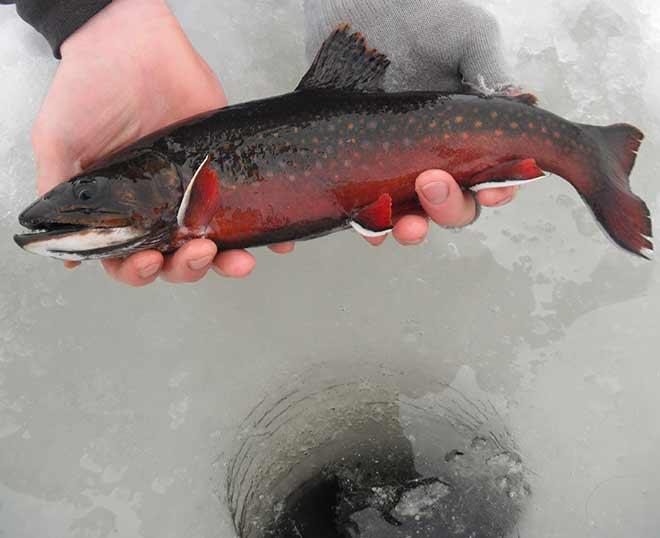
Lake Trout
Lake Superior Park lake trout are underfished in my eyes. Some of the bigger lakes host generous populations of lake trout ranging from 3 - 6 pounds. These fish hit hard, fight hard and are extremely dark in appearance compared to other lake trout in the area of Algoma. Trolling, jigging and casting catch lake trout in the spring, summer and fall. The cold water temperature of spring brings many lakers into extremely shallow water for the first month of fishing. Twenty feet of water and even less on some days is where you want to concentrate your fishing. A 7-foot medium spinning rod works best for casting spoons, tube jigs, cranks and spinners and also doubles as a great jigging rod.
Baits such as tube jigs, twister tails, soft plastic minnows, Swedish pimples or various casting and jigging spoons all work well. I like to troll with a 7-foot medium-action fibreglass bait casting rod. The rod has enough backbone for any lake trout and offers an extremely soft tip, which acts as a great shock absorber when trolling big lures and heavyweights in the summer.
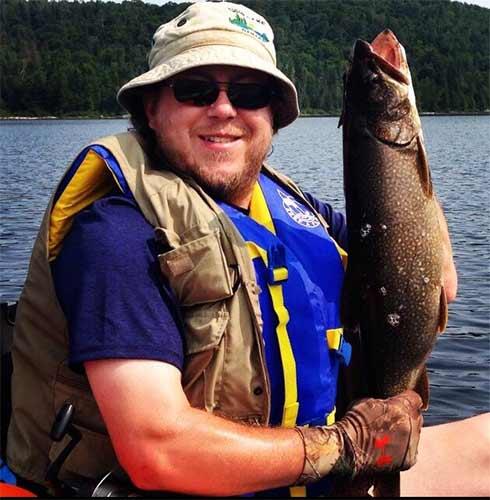
Fly fishing for these beauties is quite the thrill. During May and June, the lake trout, as I mentioned before, are relatively shallow, especially when on the feed. Casting the shallows (20 feet and under) is usually done with white, white/black, chartreuse or olive-coloured streamers.
Once the lakers move to deeper water and relate to the 40-feet-plus depths. A sink tip and some lead are often needed to keep your fly down to the strike zone. Not only are these trout after minnow imitation flies, but lakers are also eager to take crayfish and smaller offerings, so nymphs definitely have their time and place in your laker arsenal. An 8- or 9-weight rod in the 8- or 9-foot length is what I recommend for a rod when targeting lakers from a canoe or kayak in the park.
Steelhead And Salmon
During the high waters and Spring and Fall, migratory steelhead fill the rivers. This is without a doubt my favourite time to fish Lake Superior's north shore. Highway 17 north of Sault Ste. Marie is surrounded by streams and rivers full of fish. The water level is the biggest factor in timing runs on these clear, freezing-cold rivers. Floating fishing with center pin reels is my personal favourite method for catching these silvery, rocket ships. A Raven RV9 or Im8, 13-foot float rod is the ideal rod for float fishing these tributaries. Even though Lake Superior rainbow trout are generally smaller in size when compared to the other Great Lakes fisheries. What they lack in size is made up with the unreal power they possess. These fish are extremely strong, especially when the water temperature warms up in the late spring and early fall.
Casting hardware or bouncing bottom with an eight- to nine-foot spinning rod is always an effective method. Fly anglers will have a blast swinging flies as well as nymphing. An 8-weight fly rod in the 8- to 9-foot length with a large arbour reel is recommended for tackling these squirrely fish if fly fishing is our choice.
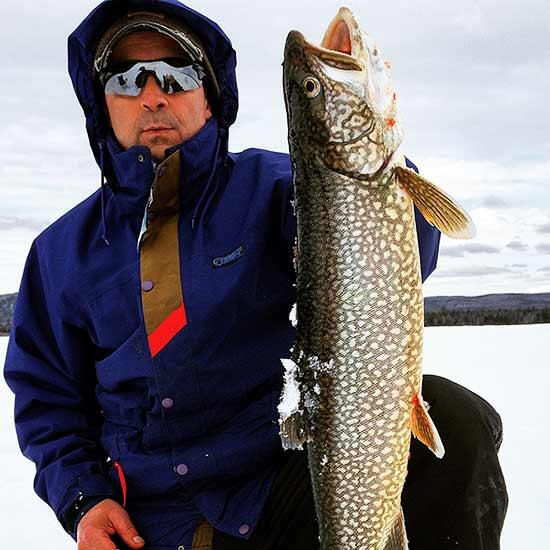
Lake Superior Park offers the most adventurous ice fishing anglers some spectacular opportunities on Lake Superior in years with cold winters. Steelhead and salmon can both be caught through the ice in February, March and into April.
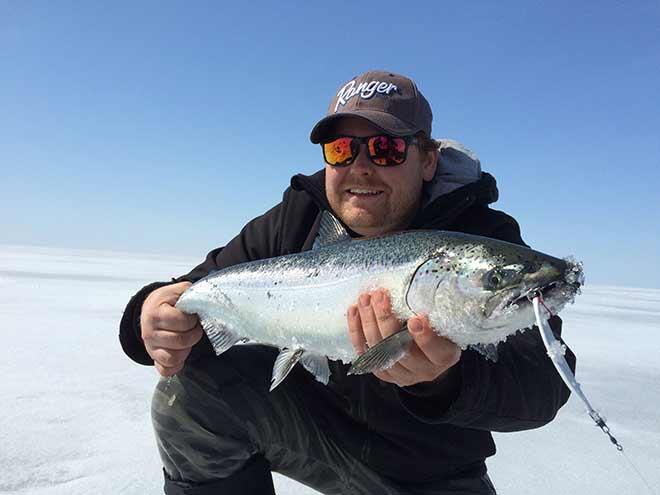
Lake Superior Provincial Park offers summertime campgrounds throughout the entire park. Visitors of Lake Superior Park have the option of staying at one of the 3 campgrounds that offer electricity, washrooms and even laundry facilities. Many use these as a home base and travel each day to a different part of the park to experience one of the many unique attractions. Many other campers/anglers choose to set up camp at one of the interior park campsites. There are 200 backcountry campsites available for visitors to use if "off the grid" interior camping is desired.
Other activities Lake Superior Provincial Park offers are 11 hiking trails, 8 canoe routes, the abandoned fishing village of Gargantua Harbour, a visitor center and the famous Agawa Rock Pictographs.
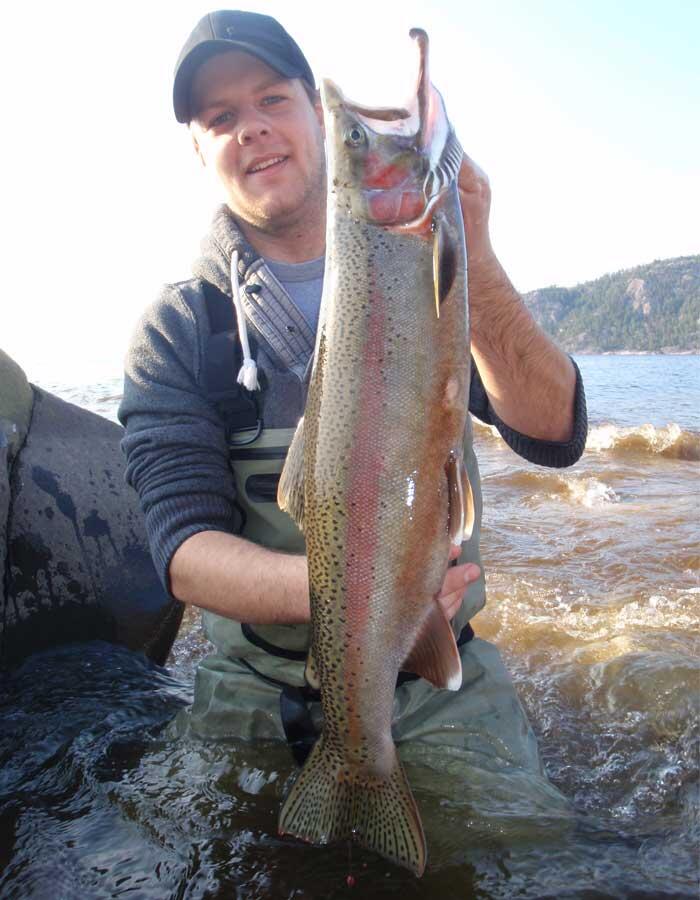
Fishing in the park can be best described as good for the soul. The lakes are typically cold, crystal clear and full of trout. You will be delighted to find that more often than not, you will be the only other anglers on the lake. For more information on fishing, contact me at www.tylerdunnguiding.ca.
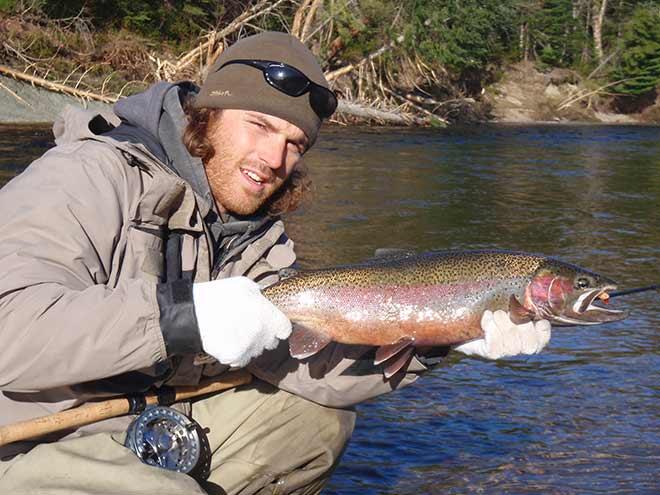
Recommended Articles
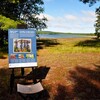
The Group of Seven in Algoma

9 Facts to Know about the Agawa Canyon Tour Train
